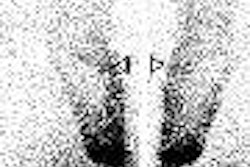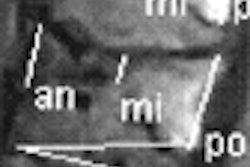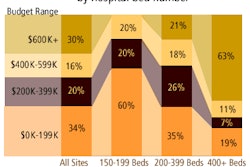An ultrasound bone curette can safely remove cranial bone without causing heat-induced injury to the surrounding tissues. This device is most effective when combined with the "scratch and away method," according to Japanese neurosurgeons.
"We use (an) ultrasound bone curette for bone removal in skull-base surgery to avoid injury to the surrounding tissues (that can be caused by) rolling up with a high-speed drill," wrote Dr. Norikata Kobayashi and colleagues in a poster at the 2006 American Association of Neurological Surgeons (AANS) meeting in San Francisco. The group is from the Research Institute for Brain and Blood Vessels in Akita.
For this case report, the authors looked at thermal changes during the removal of 5 mm of bone, with either the scratch and away method or continuous method, using an ultrasonic surgical aspirator (SonoPet UST-2001, Mutoh America, Deerfield, IL).
They set the ultrasonic device at 50% power and 80% power. The authors found that the mean maximum temperature with the curette at 50% power was 27.54˚ C (81.57˚ F) and 31.08˚ C (87.94˚ F) at 80%, using the scratch and away technique. When the continuous method was used, the mean temperature was 33.76˚ C (92.76˚ F) at 50% and 40.62˚ C (105.11˚ F) at 80%.
"These differences indicate that the scratch and away method results in lower temperatures than the continuous method. Temperature depends on duration of the procedure, and increases markedly at the end of the procedure using the continuous method," Kobayashi's group wrote.
Forthcoming improvements in the device's handpiece, which would allow for longitudinal and torsional movement, should reduce operating time as well as thermal changes, they added.
Other Japanese researchers have reported similarly positive results. A group from Nara Medical University in Nara reported on 98 consecutive spinal disorders treated with ultrasound bone curettage. They found the device easy to handle, but potentially time-consuming for removing large amounts of bone and ossified lesions (Acta Neurochirurgica, February 2006, Vol. 148:2, pp. 207-213).
More recently, neurosurgeons from Aichi Medical University said that by using an ultrasonic bone curette, they were able to safely "unroof" the optic canal, and subsequently mobilize the optic nerve, in patients undergoing treatment for parasellar tumors (Journal of Neurosurgery, April 2006, Vol. 104:4, pp. 621-624).
By Shalmali Pal
AuntMinnie.com staff writer
May 25, 2006
Related Reading
Cervical instability in RA should be corrected early, March 20, 2006
Tongue and shriek: Piercing makes for unique imaging challenges, July 19, 2004
Copyright © 2006 AuntMinnie.com



















